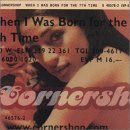Carl Perkins’ claim to fame among most music buffs is his brilliant “Blue Suede Shoes,” which his fellow Sun Records artist Elvis Presley made his own a year after Perkins had already taken the song up the charts. But in the heady brew of Sun Records’ brief run of brilliance, Perkins remains a distant memory for many behind Elvis, Roy Orbison, Johnny Cash, and Jerry Lee Lewis. A new collection of his songs from the Sun years, Orby Records Spotlights Carl Perkins, should help remedy that.
Unlike Presley, Perkins’ background was tenant farming and Nashville, and this shows in his originals, which comprise eleven of the fourteen tracks on this anthology. The originals veer from blistering rockabilly to broad country, and showcase Perkins’ yelping vocals, bar room lyrics, and fiery lead guitar. The tunes also show off the capabilities of Perkins’ band; his brothers Clayton and Jay on bass and rhythm guitar and W. S. Holland on drums lay down a solid foundation on which Perkins builds what the liner notes refer to as “country guitar laced with blues and whiskey-fueled aggression” (check out the solos on “Honey Don’t” (the b-side to “Blue Suede Shoes” and “Boppin’ the Blues” for outstanding examples).
The set is short—35 minutes—but manages to cover the breadth of Perkins’ work from 1954 to 1957 at Sun, including songs from six of his seven Sun singles, two tracks from a 1957 “dance” album, and one track (“Put Your Cat Clothes On”) that was unissued during his years at Sun and has only appeared on compilations. Unfortunately the liner notes, while providing an excellent biographical sketch, leave it to the reader to figure this out; I used the excellent Perkins discography at Terry Gordon’s Rockin’ Country Style for information on the sessions and releases.
One wonders how the course of rock history would be different if Carl hadn’t gotten into a car crash on his way to appear on the Ed Sullivan and Perry Como shows behind “Blue Suede Shoes,” sending his career into a slow slide into alcoholism and obscurity (Perkins would eventually escape both in the 1980s). Perkins once described his frustrated career: “I was bucking a good-looking cat called Elvis who had beautiful hair, wasn’t married, and had all kinds of great moves.” Fortunately for us all, history has been kinder to Perkins than the market was, and he’s now recognized as one of rock’s founding fathers. This set, while brief, does an admirable job of showing why.
Note: This compilation is one of a series of Sun years reissues from Roy Orbison’s label, Orby Records, which together with Orbison’s own recordings are being newly distributed by Eagle Rock Entertainment.
Review originally posted at BlogCritics.

